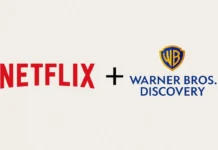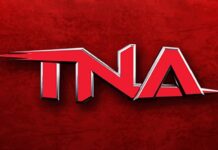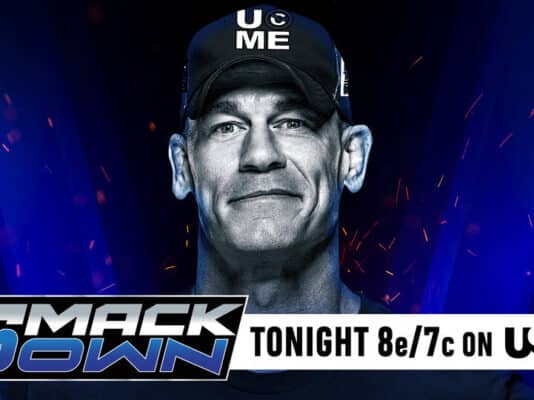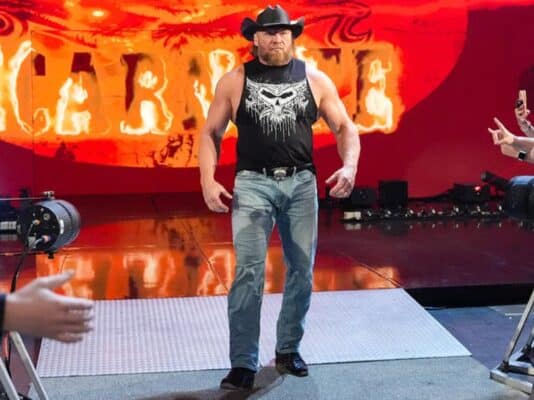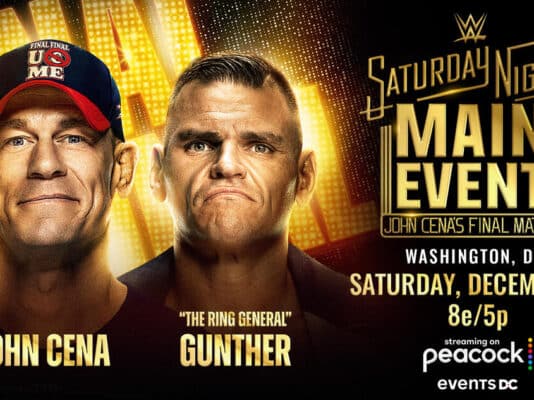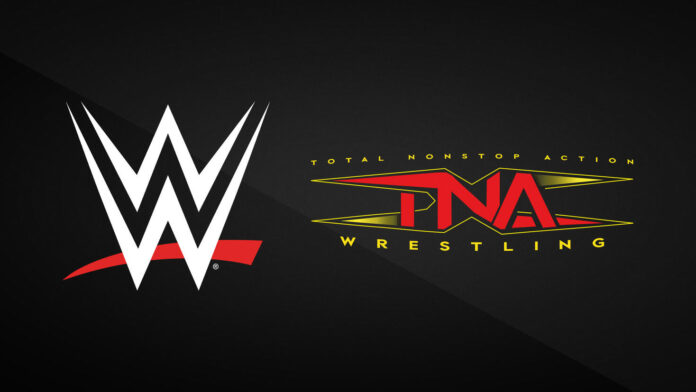
Last week, it was announced that the WWE entered into a multi-year partnership with TNA wrestling, and according to the press release, it can be expected that there will be crossover talent between the two organizations. While the announcement made news, the concept itself isn’t exactly news, considering that there was previously a working agreement between the two sides in recent years anyway. The newly-crowned TNA world champion, Joe Hendry appeared on NXT television last year, and Rosemary was also among some of the TNA talents that made their way onto WWE television. Charlie Dempsey, Wendy Choo, and others from the developmental brand worked for TNA as well.
So, on the surface, this isn’t exactly anything ground-breaking, but the ramifications of the deal might have a very impactful ripple effect.
Essentially, this official announcement of a partnership expanses the opportunity for both sides. Of course, the WWE has the leverage because the massive publicly-traded corporation dwarfs the scope of TNA, but that doesn’t mean that both sides can’t benefit from this. Up until more recent years, TNA was more or less an afterthought in the sports entertainment industry for the vast majority of the Anthem ownership since the parent company of the Fight Network in Canada rescued Impact Wrestling from the brink of collapse in 2016. There were several embarrassing blunders, both from a production and organizational standpoint that typecast the beleaguered group as still in existence, but a non-factor as far as a commodity in the industry.
The world title reigns of Alberto De Rio and Tessa Blanchard didn’t help the perception of the company at the time. Poor lighting and production value in tiny venues with only a few rows of fans on each side of the ring reinforced the notion that TNA was the minor leagues. Still, Anthem bought the company because of its ratings on the Fight Network so despite the lack of mainstream TV clearance in America, Impact Wrestling, at least for a limited period of time, accomplished its initial goal.
When there was an uptick in the interest in the promotion, it was eventually rebranded back to Total Nonstop Action just over a year ago before Scott D’Amore, who was largely credited for the turnaround, was fired because of a disagreement in the direction of the brand. Despite the change in management, TNA has trended in the right direction over the past year, drawing better live event numbers in different markets than they had in the several years prior to that. However, in recent months, there were a series of departures, including Rhino, Kushida, PCO, and a few others. Reportedly, some talents were asked to take a pay cut since the company would have a tighter budget in 2025. I don’t think this is necessarily a reason to push the panic button, as Anthem is a billion dollar corporation, even if those assets or resources wouldn’t be invested into the wrestling project. That being said, the logistics of running in different markets in bigger revenues to try to capitalize on the renewed interest in the product will increase live event costs across the board. Aside from the increased cost of the building rental, there’s also an increase in the travel costs for the talent, and the production costs to get the equipment and crew there for the TV tapings.
In no way, shape, or form am I advocating for the talent to take less money to risk their bodies, but just to point out that maybe the suggested pay cuts were an attempt to offset increased production costs with the expanded touring schedule.
But aside from NXT talent appearing on Impact, and the WWE bringing in some of the knockouts for the women’s Royal Rumble, what are the true business dynamics of this partnership?
First and probably most importantly for the WWE side of the equation, they can track the progress of TNA stars and basically cherry-pick those that they think will be best suited for the jump to WWE. Furthermore, TNA can also become a place where not only NXT talent can develop, but also any of the potential WWE prospects can be sent there to learn how to work television as well. As much as WWE will tout its accomplishments through the Performance Center because it sounds good on the conference calls for stockholders, even WWE management knows that there simply isn’t enough room or resources within one organization to develop talent from the entire industry. Plus, different experiences can be more helpful to different talents. It’s not a knock on the WWE philosophy or playbook, but some very talented performers will be better off learning different styles outside of the corporate environment.
In many ways, this increases the WWE footprint among the free agent market, not just for known wrestlers, such as Jordynne Grace, who finished up with TNA at the Genesis pay-per-view, but also for the yet to be discovered talent that is the focus of the WWE ID program. It’s a very wise business strategy, as it gives the WWE first priority to sign a prospective talent with a minimal investment since it’s not a full WWE developmental deal. The WWE ID talent can explore their options within the industry, but the TKO corporation still has the chance to exercise the agreement to have the right of first refusal so they can still ultimately decide if they want to offer a performer a full deal without any bidding war. Much of the same can be said for the TNA partnership, if the WWE wants someone that’s under a TNA contract, the odds are that they will land that talent for a WWE deal because the money offered is exponentially more than you can realistically expect from TNA.
The result of those dynamics is that it more or less freezes many of the possible pipelines for talent for AEW. The WWE knows that letting Adam Copeland walk away without offering him an amount of cash that is too good to turn down isn’t necessary because it’s a much different situation for Tony Khan to sign an aging legendary near 50 than it is to sign a wrestler with major potential in their 20s.
On the other end of the spectrum, this also gives WWE access to WWE legends that either work for TNA now or will during the course of this partnership. I think it’s fair to say that The Hardys have more or less had their run in WWE, especially because they’ve already had more than one comeback stint in the company so aside from a one-off special appearance, Matt and Jeff have done more or less all they can do within the WWE. That said, with this partnership, it becomes much easier for The Hardys to get inducted into the WWE Hall of Fame, and thus the revenue that will be generated from the merchandise associated with it. It can be more of a hurdle if the WWE office had to wait for them to finish their TNA contracts to invite them into the Hall of Fame. Yes, The Hardys work well in TNA because they can be a big fish in a smaller pod, which is completely fine, but they are still primarily remembered for their tenure in WWE so it makes sense that there would be opportunities for them from a nostalgia perspective.
The former Dolph Ziggler is a guy that can still go and he could provide a boost to the NXT brand with a series of appearances. Truth be told, TNA isn’t in the position to be any threat to WWE, but even TKO management knows that it’s not good for the industry if there aren’t options so they can cherry-pick talent that they think will be an asset to the corporation, but at the same time, give enough to TNA in return to keep them a notable commodity in the industry. Of course, the more Total Nonstop Action can expand, there’s a smaller piece of the pie for AEW because fans only have a realistic wrestling budget. Maybe the potential TNA live event with The Hardys meet and greet after the show will take priority compared to the standard Dynamite taping.
Finally, and this is more of a technicality than anything else, this partnership certain provides a great legal shield at any point in the future if TKO is accused of a monopoly or a violation of anti-trust laws. Keep in mind, the WWE had to pay Major League Wrestling a reported $20 million at the end of 2023 because of a lawsuit based on an anti-trust violation related to their brief television show that aired on the Reelz network. Again, the announcement itself isn’t newsworthy on its own since we’ve seen the crossover within the past few years previously, but the sum total of the agreement is another way for the WWE to expand its influence on the industry.
What do you think? Share your thoughts, opinions, feedback, and anything else that was raised on Twitter @PWMania and Facebook.com/PWMania.
Until next week
-Jim LaMotta
E mail [email protected] | You can follow me on Instagram, Facebook, & Threads @jimlamotta89


